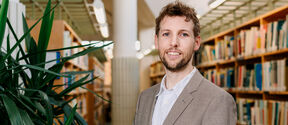Lu Liangliang boards ship to spend three chilly months in the Antarctic
Ship performance and safety take a young researcher to one of the most remote places on Earth.

The ship left a bit later than planned, and she first brought us to customs to check us out from South Africa. The Antarctic voyage was now formally underway.
As we sailed further south, the waves became larger and you could not avoid sea sickness. People from South Africa told me of a saying: 'rolling forty, screaming fifty and icy sixty' – the numbers referring to degrees of latitude.

I got to see some interesting equipment, like an automatic sailing boat, which aims to collect water samples and temperature, salinity and pressure data. The remotely operated underwater vehicle (ROV) and the autonomous underwater vehicle (AUV) are already on board.
Icebergs appeared from time to time, which was fascinating as I have never seen icebergs before.

A bit south of the 60th parallel the ship met pack ice. All systems were set up and I began a 24-hour visual ice observation together with two students from Stellenbosch University in South Africa. I saw a sunrise at 03:00 during one of my shifts.
We went into quite a few ice ridges, got stuck and had to ram the ice to keep moving. Some of our cameras are used for monitoring.
Though we got stuck in the ice, there were some interesting activities: a traditional initiation ceremony for those entering the southern polar circle for the first time and a South African barbeque – or braai – held on the helicopter deck.

On December 18 we finally sailed out of the ice. I finally saw penguins!
The ship is now in open waters near the ice shelf, waiting for more favourable ice and wind conditions in order to reach the shelf and unload cargo. There are many incredibly large ice sheets or icebergs. In the cloudy environment, it makes me feel like I've arrived on another planet.
– Lu Liangliang
Read Lu Liangliang's interview before the journey.

Learn more about the voyage and related research at Aalto University.

Ship performance and safety take a young researcher to one of the most remote places on Earth.

Part 2 of 3. Lu Liangliang reports from the Antarctic at the beginning of the new year.

Part 3 of 3. Lu Liangliang files his final report from the Antarctic before returning to Finland.

We focus on the behaviour of ships and structures in normal and extreme environments. We do our research by considering the safety of maritime transportation, as well as the experiences the marine environment can offer to cruise vessel passengers.


